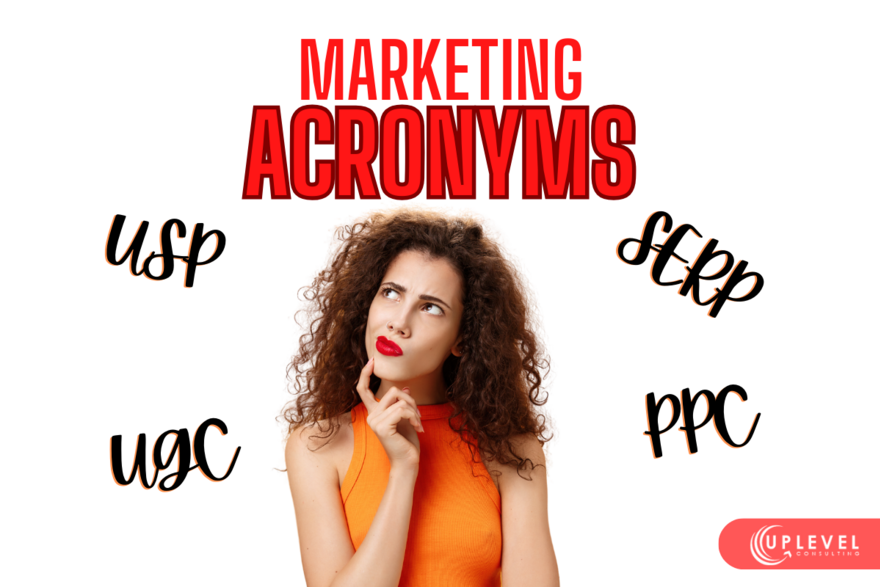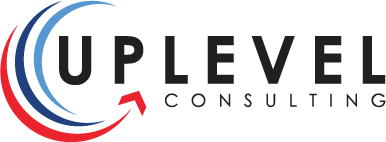The Top Acronyms to Know In Marketing

Marketing is full of acronyms. Sometimes they can be helpful. But to a business owner who is focused on running their business, they can be annoying.
Rule number one in public speaking is know your audience. This applies to conversations too.
And even though I've worked in some form of marketing for 20 years, I still find myself needing to brush up at times. Especially since marketing is a huge topic that involves all different kinds of marketing. Not to mention, sometimes advertising is also thrown into the mix.
While marketing and advertising are two separate things, they do have some overlap as you'll see in some of the terms below.
If it's not your daily language to speak "marketing," I hope you find this list a helpful resource.
1. ROI - Return on Investment: Ok ROI is used broadly in business too. But in marketing specifically, ROI is basically a measure of the profitability of a marketing campaign or investment, calculated by dividing the net profit by the cost of the investment.
2. SEO - Search Engine Optimization: SEO has become fairly commonplace as well. Especially with the tech advances and user friendly platforms that have the do-it-yourself ability. The whole idea is to ensure your website will rank higher in search engine results, in order to increase organic (non-paid) traffic. Think about search terms people will use to find you. Then aim to stack your website full of those terms. Act natural though, you don't want to look weird by saying the say word over and over again!
3. PPC - Pay-Per-Click: This one is more advertising since it's all about a paid fee. PPC is when advertisers pay a fee each time their ad is clicked, often associated with platforms like Google Ads.
4. SEM - Search Engine Marketing: A broader term that encompasses both paid advertising (PPC) and organic efforts to improve search engine visibility. A simplified way to remember the difference is SEO is more organic and SEM is paid.
5. CTR - Click-Through Rate: A metric that measures the ratio of clicks to impressions in online advertising. It's often used to evaluate the effectiveness of digital ads or email campaigns. In addition the CTR is also used in speaking about email marketing.
6. CPA - Cost Per Acquisition: is basically the cost associated with acquiring a new leads. It's calculated by dividing the total cost of a campaign by the number of acquisitions. CAC establishes how much a business is spending on getting customers. For more on CAC, read this article.
7. CRM - Customer Relationship Management: A system or strategy used to manage and nurture customer relationships and interactions. Marketing is all about staying in front of your customers. Continuing to talk to them, educate them and become their trusted resource. The magic is in the follow up, as they say. That's why a CRM tool is so critical to your marketing efforts.
8. CTA - Call to Action: A prompt or instruction designed to encourage a specific action from the audience, such as "Sign up now" or "Learn more." In each piece of marketing you create, you need an effective CTA. How will you motivate them to act?
9. KPI - Key Performance Indicator: Metrics used to measure the success or performance of marketing campaigns, strategies or activities. Determine your KPIs at the outset of your marketing strategy.
10. UGC - User-Generated Content: Content created and shared by customers or users, often used to build trust and engagement. Ask them to participate. UGC content is a great way to make your marketing a two-way conversation.
11. B2B - Business-to-Business: Marketing and sales strategies that target other businesses as customers.
12. B2C - Business-to-Consumer: Marketing and sales strategies that target individual consumers as customers.
13. SERP - Search Engine Results Page: The page displayed by a search engine in response to a query, showing a list of search results. We all want to be high in the SERP but with algorithm changes constantly shifting, there's a science to getting there today!
14. CMS - Content Management System: A software platform that allows businesses to create, edit, and manage digital content on websites or other online platforms. HubSpot, GoHighLevel, Shopify, Magnolia and many more exist as options.
15. CTR - Customer Lifetime Value: The total revenue a business can expect from a customer throughout their entire relationship with the company. For more on this concept and to calculate yours, read this article.
16. USP - Unique Selling Proposition: The unique quality or feature that sets a product or service apart from competitors. How are you different? Why should I choose you? Help your prospects decide by making it easy to identify this for them.
17. SWOT - Strengths, Weaknesses, Opportunities, Threats: A strategic planning tool used to identify and analyze a business's internal strengths and weaknesses and external opportunities and threats. Sometimes used in marketing as much as it is in business.
18. GDPR - General Data Protection Regulation: A European Union regulation that governs data privacy and protection, impacting how businesses handle customer data. If you do email marketing, it's important to know GDPR.
19. CPC - Cost Per Click: Since it's all about the amount paid for each click on a paid ad in a Pay Per Click campaign, this one is more about advertising if you ask me.
20. CPM - Cost Per Mille (Thousand): The cost per thousand impressions in online advertising, commonly used in display advertising.
These are just a few of the many acronyms used in marketing (and advertising). What acronyms have stumped you? If you know of any good ones I've missed, I'd love to hear from you!

0 comments
Leave a comment
Please log in or register to post a comment